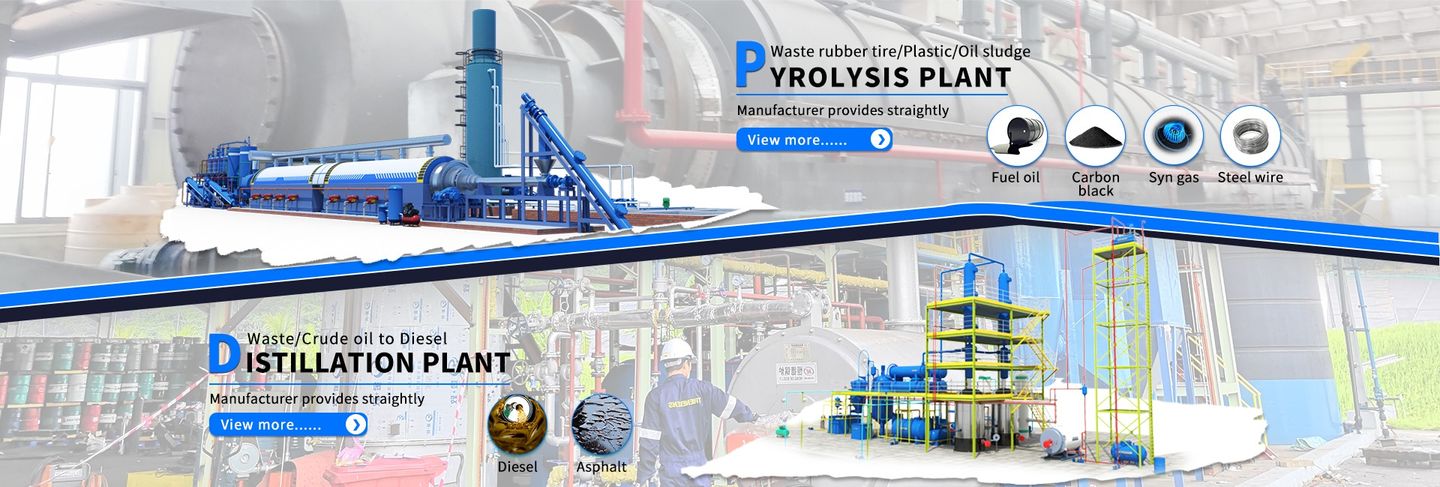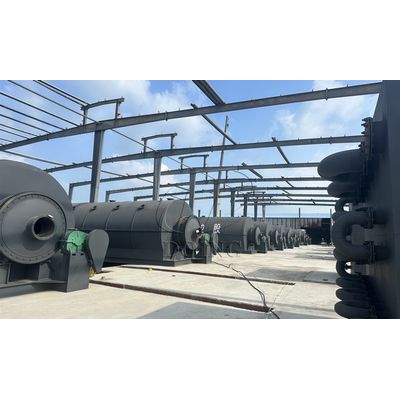


What is the pyrolysis temperature of rubber?
Pyrolysis is a thermal degradation process that breaks down complex polymer chains in the absence of oxygen. When applied to rubber, pyrolysis can convert waste materials such as tires or industrial rubber into valuable products such as fuel oil, carbon black, and steel wire. The process involves heating the rubber to a specific temperature, which varies slightly depending on the type of rubber and its physical propertie
Critical Temperature Range for Rubber Pyrolysis
Preheating Stage (160°C):
In the initial stages of pyrolysis, the rubber is heated to approximately 160°C. This stage serves two primary purposes:
1. To remove any residual moisture in the rubber, which would otherwise cause instability during the decomposition process.
2. To soften the rubber, making it more susceptible to thermal decomposition.
For rubber with a higher moisture content (such as newly processed waste), this preheating stage may require additional time to ensure complete drying.
Oil Extraction Stage (200-300°C):
After preheating, the temperature is steadily increased to between 200°C and 300°C. This is the critical temperature range for rubber pyrolysis, breaking down into lighter hydrocarbons and forming fuel oil. The heating rate during this phase is typically controlled at 1-2°C per minute to ensure efficient and uniform decomposition. This phase typically lasts 8-10 hours. The heat is then increased to over 300°C to pyrolyze any remaining raw material that has not been fully pyrolyzed until the temperature begins to drop. All burners are shut off when the temperature reaches 250°C. The entire heating process takes approximately 10-12 hours. Monitoring the oil yield is crucial, as a sudden drop in yield may indicate a need for temperature adjustment.
Cooling Phase:
If you are operating a batch rubber pyrolysis plant, once oil extraction is complete, the pyrolysis reactor will gradually cool to 80°C or below 60°C. During this phase, the carbon black can be safely collected and stored. An effective cooling system, such as forced air circulation using an induced draft fan (e.g., 15kW capacity), can significantly reduce the cooling time to 4-5 hours. If you are using a semi-continuous or fully continuous rubber pyrolysis plant, the recovered carbon black can be discharged at high temperatures. In summary, the pyrolysis temperature for rubber is not a fixed value, but rather a range that depends on the type of rubber and the specific conditions of the pyrolysis process. Different rubber pyrolysis temperatures affect the yield of end products:
Lower rubber pyrolysis temperatures (e.g., 200-300°C) primarily produce liquid volatile hydrocarbons, particularly rubber pyrolysis oil.
Higher rubber pyrolysis temperatures (e.g., 400-600°C) increase gas and coke production as the liquid fraction decreases. Understanding these factors is crucial for optimizing the pyrolysis process and maximizing the recovery of valuable products from rubber waste.
At DOING, we are dedicated to transforming rubber waste into valuable resources through efficient pyrolysis plants. If you are considering converting rubber waste into fuel oil and other resources, we welcome your collaboration. Our experienced team will ensure your pyrolysis operation is cost-effective and efficient.





